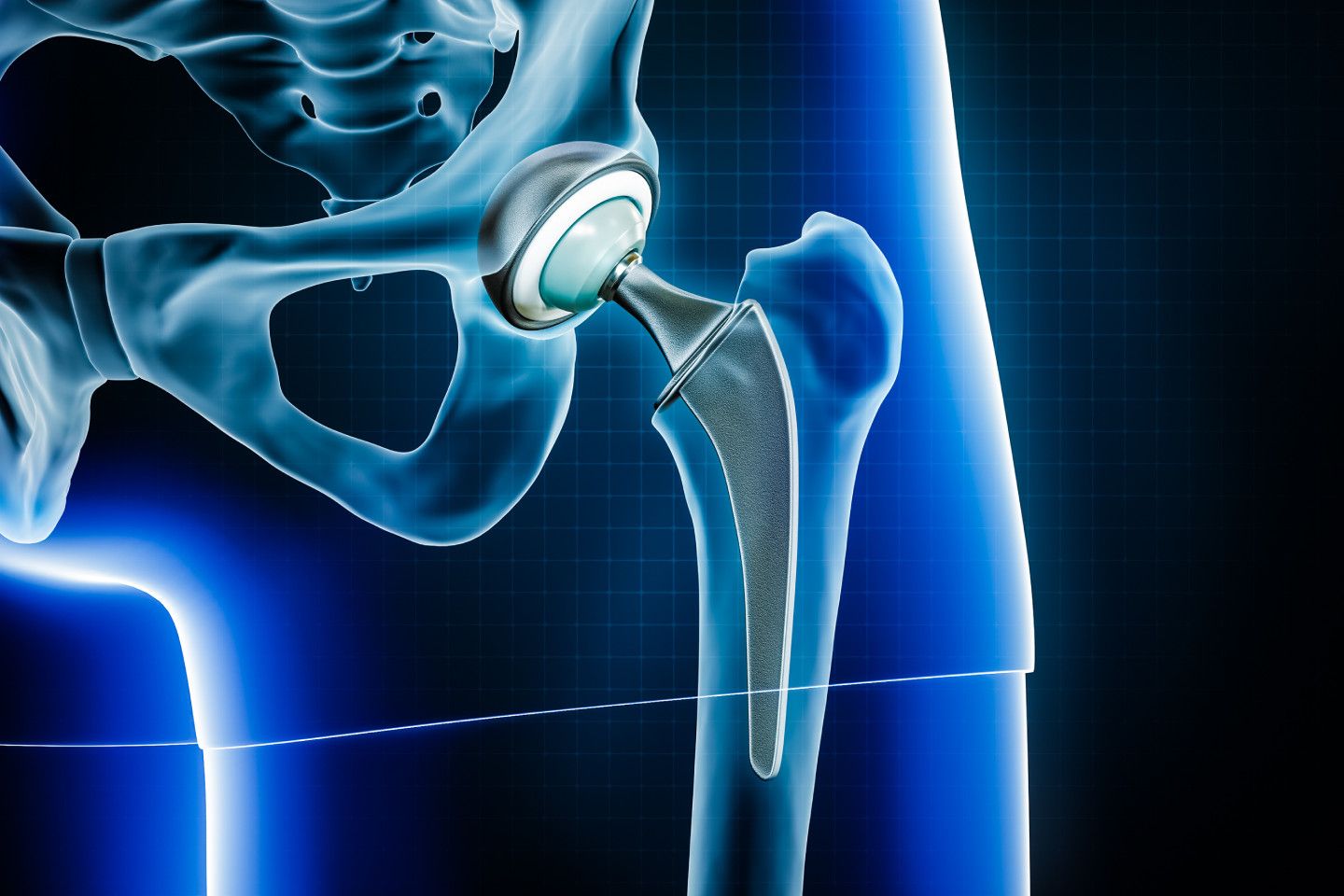
Introduction
Hip arthroplasty, or hip replacement surgery, has become one of the most successful procedures, providing relief to millions who suffer from unbearable hip pain and restoring their ability to move freely. The hip joint is a ball-and-socket joint, where the rounded head of the femur (thigh bone) fits into the cup-shaped socket of the pelvis, allowing a wide range of motion. When considering hip replacement, it is important to understand the different types of surgeries available. Whether you are exploring options for yourself or researching on behalf of a loved one, having knowledge about these various procedures can help you make informed decisions and have more productive discussions with your healthcare provider.
Read on to learn more about the various types of hip replacement surgeries.
Why Do People Need Hip Replacement?
Common reasons people require hip replacement include:
Osteoarthritis – A common joint disease that causes hip pain and stiffness as the cartilage wears down over time.
Rheumatoid arthritis – An inflammatory condition that causes joint inflammation and gradually damages the hip.
Post-traumatic arthritis – A type of arthritis that causes joint damage and discomfort and arises following a severe hip injury or fracture.
Avascular necrosis – A condition where poor blood supply to the hip bone causes the bone tissue to die, leading to joint collapse.
Hip fractures – If the joint is seriously damaged, these breaks in the upper portion of the thigh bone frequently need to be replaced.
Bone tumours – Unusual growths in or close to the hip joint that may cause bone deterioration and require replacement surgery.
Types of Hip Replacement Surgery
Today, patients experiencing hip pain can choose to alleviate their symptoms by undergoing hip replacement surgery as a last resort when all other alternative options do not provide the desired relief. However, the type of hip replacement needed depends on various factors. Your orthopaedic surgeon will also consider your age, activity level, and all other facets of your health when he recommends the most appropriate procedure.
Based on the Part Replaced
There are two types of hip replacement surgery based on the part of the hip joint that needs to be replaced. The human hip has two parts: the ball and the socket. The ball is located on top of the femur (the thigh bone), while the socket is located on the pelvis (the hip bone).
- Total Hip Replacement
This involves replacing both the ball and the socket of the hip joint. It is the most common and comprehensive form of hip replacement surgery. - Partial Hip Replacement
Only the ball part of the hip joint is replaced. This type is often recommended for specific cases, such as certain types of hip fractures.
Based on the Surgical Approach
Next, to replace a hip, a surgeon will remove the hip and fit the implants. A surgeon can access the hip joint from three angles to remove the damaged hip. They are as follows:
- In the anterior approach, the hip joint is accessed from the front. This minimally invasive technique, known as the muscle sparring approach, is preferred to prevent damage to the surrounding muscles and speed up recovery.
- In the lateral approach, the hip joint is accessed from the side. This approach is also minimally invasive, outside the hip, away from the blood vessels.
- In the posterior approach, the hip joint is accessed from the back. This minimally invasive approach is used for simple hip replacement surgery and can be extended for revision surgery when needed.
Based on Invasiveness
Based on the invasiveness required to perform the surgery, hip replacement procedures have been categorized as traditional and minimally invasive.
- Traditional Hip Replacement
In a traditional hip replacement, the surgeon makes a large, single incision (around 10-12 inches long) to access the hip joint, typically through the lateral or posterior approach. This method can increase recovery time, as the surgeon has to cut through various muscles and tendons to reach the joint. Additionally, it puts patients at risk of dislocation until all the supportive structures associated with the implants are fully healed. - Minimally Invasive Hip Replacement
On the other hand, minimally invasive hip replacement aims to minimise the impact of surgery on healthy tissues, including muscles and blood vessels. Initially, the anterior approach was presented as a minimally invasive way to perform hip replacement surgeries. However, nowadays, surgeons are using minimally invasive techniques in all approaches. A minimally invasive procedure involves accessing the joint through one or two small incisions and moving the muscles aside as needed. The primary advantages of this method are lower damage, less pain, reduced limping and risk of dislocation, and easier recovery.
What to Expect During Recovery
Rehabilitation following hip replacement surgery depends on the type of procedure, the patient's age, overall health, and degree of rehabilitation commitment.
Typical recovery timeline:
Hospital stay: 1-5 days (shorter for minimally invasive procedures)
Walking with or without assistance: Same day or 1 to a few days after surgery
Return to light activities: 3-6 weeks
Full recovery: 3-6 months
Key rehabilitation components:
Physical therapy begins soon after surgery
Gradually increasing walking distance
Some specific exercises involve hip muscle strengthening.
Dislocation precautions (different depending on surgical approach)
How to Choose the Right Hip Surgery for You
Hip replacement surgery is based in part on individual factors, such as:
Age and overall health
Bone quality and anatomy
Activity level and lifestyle goals
Surgeon's expertise and recommendation
A recent article published in the Journal of Arthroplasty indicates that patient outcomes may depend more on a surgeon’s experience with the technique than the actual technique.1
Advanced Hip Replacement Systems
Hip arthroplasty using an advanced system like the Meril Latitud Hip Replacement System offers a comprehensive solution. This system is designed to suit diverse patient needs and includes:
Uncemented & cemented femoral stems
Cobalt chrome or stainless steel femoral heads
Acetabular cup system made of special titanium alloy and a highly cross-linked poly to accommodate the femoral head
Various sizes are available to accommodate different patient anatomies.
Conclusion
Hip replacement surgery has become much more advanced, with several different ways to tackle each person’s needs. Minimally invasive techniques have the potential benefits, but are not for everyone. The case must be discussed with an experienced orthopaedic surgeon who can consider your condition, anatomy, and lifestyle goals and recommend the best procedure.



